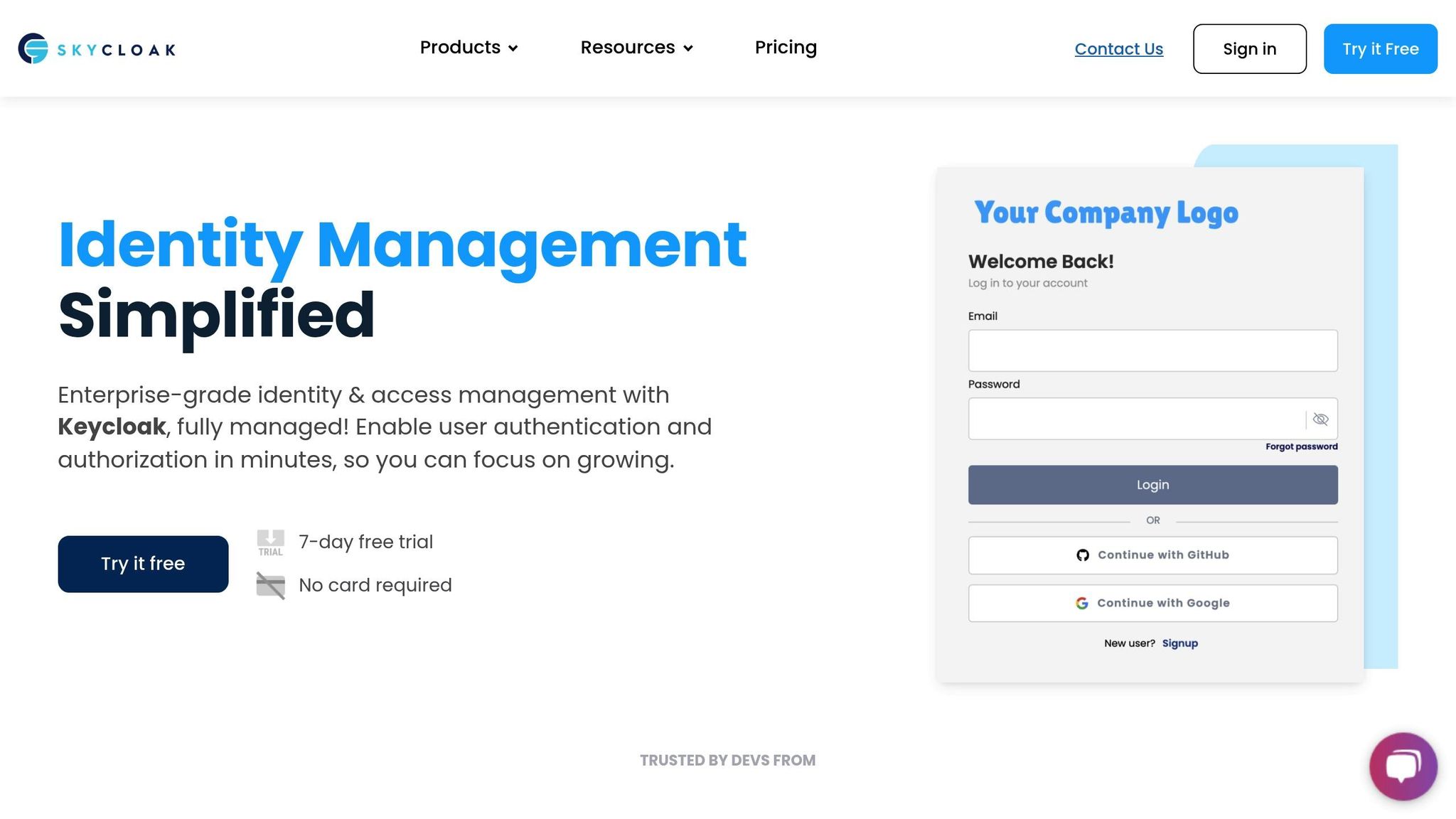Want to secure your Keycloak tokens? Here’s a quick guide to the best practices for storing, encrypting, and managing tokens effectively. Follow these steps to protect sensitive data and ensure compliance:
- Store tokens securely: Use encrypted databases or vaults. Avoid local storage, session storage, or hardcoding tokens.
- Encrypt tokens: Protect tokens both at rest and in transit using strong encryption methods.
- Manage token lifecycles: Set appropriate expiration times, revoke tokens after logout, and automate cleanup.
- Audit and comply: Align with standards like SOC 2 and GDPR by encrypting data, maintaining logs, and ensuring secure deletion.
- Secure caching: Encrypt cache entries, isolate networks, and match cache TTL with token expiration.
Secure JWT Authentication – Where to store the JWT Token …
Token Storage Locations
Storing tokens securely is essential to prevent theft and unauthorized access.
Secure Storage Methods
Tokens should be stored server-side in encrypted databases or vaults, kept separate from your code and configuration files. Avoid hardcoding sensitive tokens into your codebase or leaving them in unprotected files. For short-lived client tokens, rely on HTTP-only, secure cookies with the right flags enabled.
Common Storage Vulnerabilities
Client-side storage can be risky. Avoid storing tokens in the following places:
- Local storage or session storage
- Unencrypted cookies
- JavaScript files
- Plain text configuration files
Code and Storage Isolation
1. Infrastructure Separation
Use a dedicated storage service for tokens, keeping it isolated from your main application infrastructure. This adds an extra layer of security in case the application layer is compromised.
2. Access Control Implementation
Set up role-based permissions to ensure only authorized services and processes can access token storage locations.
3. Encryption
Refer to the Token Encryption section for guidance on managing encryption keys effectively.
Skycloak’s managed hosting offers preconfigured, isolated storage solutions designed to meet these security standards.
These strategies lay the groundwork for effective token encryption and key management.
Token Encryption
Protect authentication data by encrypting tokens. Skycloak’s platform ensures tokens are encrypted both when stored and during transmission. The platform is SOC2 certified and complies with GDPR requirements. For detailed guidance on handling encryption keys, including lifecycle management and rotation, check out the section on Encryption Key Management.
Up next: strategies for managing encryption keys.
Token Lifecycle Management
Once tokens are encrypted, managing their lifespan and revocation becomes crucial for strengthening Keycloak’s security.
Token Duration Settings
Adjust token lifespans to balance security and usability. Shorter lifespans help minimize risks, while longer ones enhance user convenience. Skycloak offers pre-set duration templates to simplify this process.
Token Revocation Steps
Revoke tokens immediately in cases like logout or potential security breaches. Ending sessions right away ensures tokens can’t be reused. Skycloak streamlines this process by automating revocation across all connected services.
sbb-itb-9d854a3
Audit and Compliance
Regulatory Standards
Connect secure storage and encryption protocols to established audit and regulatory frameworks.
- SOC 2 compliance: Currently achieved.
- HIPAA and ISO 27001 certification: Targeted for completion by 2025.
- GDPR requirements:
- Encrypt tokens both at rest and during transit.
- Maintain detailed logs of token access.
- Implement secure deletion mechanisms.
- Store data of EU users within the region.
- Facilitate Data Subject Access Requests (DSARs).
Token Caching
Use caching to improve performance while keeping tokens secure.
Secure Cache Design
- Encrypt cache entries to protect sensitive data.
- Require certificate-based authentication for accessing the cache.
- Isolate cache networks to ensure that only authorized services can access them.
- Set fine-grained access controls to limit who can interact with the cache.
- Align cache TTL (Time-to-Live) settings with token expiration periods, and establish regular maintenance routines.
Cache Maintenance
Ensure the cache TTL matches the token expiration time. Schedule cleanup jobs every 5 minutes to remove expired entries and keep the cache efficient.
Key Invalidation Patterns:
- Invalidate tokens immediately after password changes or when anomalies are detected.
- Perform maintenance during low-traffic periods to:
- Remove expired tokens
- Check encryption integrity
- Rotate encryption keys
- Integrate these steps with token revocation workflows for a more secure system.
Set up automated cache-purge routines to respond to security incidents. Include recovery steps and alert monitoring to address issues promptly.
If you’re using Skycloak’s managed platform, take advantage of its built-in features. These tools can handle token cleanup, maintain encryption standards, and ensure compliance audits are up to date.
Skycloak Platform Integration

Skycloak ensures that tokens are stored securely and that storage policies remain consistent across clusters and regions through its managed platform.
This platform combines token storage, encryption, and compliance controls into one streamlined solution.
Key Features of the Managed Platform
Skycloak offers comprehensive token management designed to meet industry standards.
- Automated encryption for tokens, both at rest and in transit
- Built-in SOC 2 compliance controls
- Tools for EU data residency and DSAR automation
Next, let’s explore how Skycloak integrates these workflows into enterprise applications.
Integration Support
Skycloak goes beyond storage and encryption by offering seamless integration with enterprise systems.
Features include:
- Pre-built templates for common authentication processes
- Custom domain options for enterprise setups
- Private network access for added security
- Advanced monitoring and logging tools to track security events
For businesses requiring extended session management or advanced revocation workflows, the Growth tier provides:
- 99.995% SLA uptime guarantee
- Support for custom Keycloak extensions
- 24/7 access to security support
Conclusion
When managing storage locations, encryption, lifecycle management, audits, and caching, it’s essential to apply consistent controls. Secure token storage is a cornerstone of Keycloak IAM security. Focus on encryption, isolated storage, compliance, and automated processes to meet efficiency goals while addressing specific needs.
Ensure your storage practices comply with standards like GDPR and SOC 2. Consider using Skycloak’s managed platform to implement isolation, encryption, audit trails, and scale seamlessly from B2B to millions of B2C users – helping to minimize risk.

